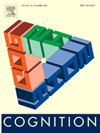Transcranial magnetic stimulation of the right inferior frontal gyrus impairs bilinguals' performance in language-switching tasks
IF 2.8
1区 心理学
Q1 PSYCHOLOGY, EXPERIMENTAL
引用次数: 0
Abstract
It is widely accepted that bilinguals activate both languages simultaneously, even when intending to speak only one. A prevailing theory proposes that bilinguals inhibit the nontarget language to produce the target language, thought to be supported by evidence that the right inferior frontal gyrus (rIFG), a region typically associated with inhibition, is activated during language-switching tasks. However, it remains unclear whether the rIFG plays a causal or epiphenomenal role in this process. To explore the role of the rIFG, the present study employed transcranial magnetic stimulation (TMS) to modulate its neural activity and evaluate subsequent behavior in bilinguals. Specifically, twenty-nine Chinese-English bilinguals participated in the study and performed picture-naming tasks in single- and dual-language contexts after receiving sham stimulation (Sham), continuous theta burst stimulation (cTBS), or intermittent theta burst stimulation (iTBS) over the rIFG in three separate visits. Sham served as a control, with cTBS and iTBS intended to decrease and increase cortical excitability, respectively. We found that, compared to Sham, cTBS led to larger asymmetric switching costs and smaller asymmetric mixing costs, whereas iTBS resulted only in smaller asymmetric mixing costs. These findings suggest that cTBS targeting the rIFG likely impairs both local and global control. However, iTBS applied to the rIFG alone may not necessarily enhance language control mechanisms and could even hinder global control. Moreover, exploratory analyses found pronounced TMS-induced impairments in less balanced bilinguals, implying their potentially greater reliance on bilingual language control. Overall, this study is the first to suggest a causal role of the rIFG in language switching.
经颅磁刺激右侧额叶下回会影响双语者在语言转换任务中的表现
人们普遍认为,双语者会同时激活两种语言,即使他们只想说一种语言。一种流行的理论认为,二语者通过抑制非目标语言来产生目标语言。有证据表明,在进行语言转换任务时,通常与抑制有关的右下额回(rIFG)会被激活。然而,rIFG 在这一过程中是起因果作用还是表象作用仍不清楚。为了探索rIFG的作用,本研究采用经颅磁刺激(TMS)来调节其神经活动,并评估双语者的后续行为。具体来说,29名中英双语者参加了研究,他们在接受了假刺激(Sham)、连续θ脉冲刺激(cTBS)或间歇θ脉冲刺激(iTBS)后,分三次在rIFG上进行了单语和双语语境下的图片命名任务。Sham 作为对照,cTBS 和 iTBS 则分别用于降低和提高大脑皮层的兴奋性。我们发现,与 Sham 相比,cTBS 导致更大的非对称切换成本和更小的非对称混合成本,而 iTBS 只导致更小的非对称混合成本。这些研究结果表明,针对 rIFG 的 cTBS 可能会损害局部和全局控制。然而,单独应用于 rIFG 的 iTBS 不一定会增强语言控制机制,甚至可能会阻碍全局控制。此外,探索性分析发现,在不太平衡的双语者中,TMS诱导的损伤非常明显,这意味着他们可能更依赖于双语语言控制。总之,本研究首次提出了rIFG在语言转换中的因果作用。
本文章由计算机程序翻译,如有差异,请以英文原文为准。
求助全文
约1分钟内获得全文
求助全文
来源期刊

Cognition
PSYCHOLOGY, EXPERIMENTAL-
CiteScore
6.40
自引率
5.90%
发文量
283
期刊介绍:
Cognition is an international journal that publishes theoretical and experimental papers on the study of the mind. It covers a wide variety of subjects concerning all the different aspects of cognition, ranging from biological and experimental studies to formal analysis. Contributions from the fields of psychology, neuroscience, linguistics, computer science, mathematics, ethology and philosophy are welcome in this journal provided that they have some bearing on the functioning of the mind. In addition, the journal serves as a forum for discussion of social and political aspects of cognitive science.
 求助内容:
求助内容: 应助结果提醒方式:
应助结果提醒方式:


